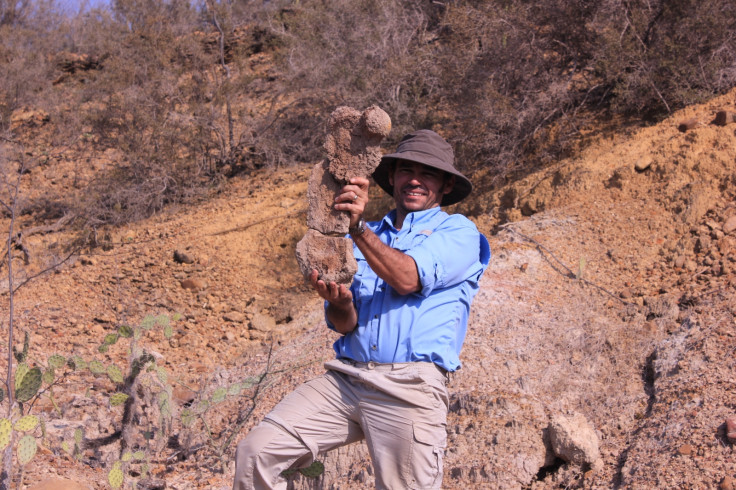Giant extinct 'beach-walking' sloth species discovered in Venezuela

An extinct species of sloth dating back 11 million years has been discovered in Venezuela.
The species, Eionaletherium tanycnemius, would have weighed the same as a small car, tipping the scales at over one tonne.
Publishing their findings in the Royal Society Open Science, scientists at the Instituto Venezolano de Investigaciones Cientificas said the fossil was discovered in Buchivacoa Municipality, about an hour west to Santa Ana de Coro.
It comes from the Late Miocene Urumaco Formation and had several unusual features suggesting it was a new species.
Ascanio Rincon, who found the fossil last year, told IBTimes UK the creature would have lived on the ground with others between nine and 11 million years ago.

They believe it weighed about 1,100kg, making it far bigger than sloth species living today, but about average for others from the same time and period.
However, scientists were surprised to find a number of unusual characteristics about Eionaletherium. It had a very long tibia similar to that found among the semi-aquatic genus of creatures Thalassocnus, but did not swim.
"The most amazing feature of this sloth is the tibia elongation, because just the genus Thalassocnus in Peru has the same condition. This Thalassocnus is a semiaquatic sloth, but the Eionaletherium, the new Venezuelan sloth doesn't have the pachyostosis typical of semiaquatic mammals," he said.

Pachyostosis is a condition where bones get thicker resulting in little to no marrow.
"Eionaletheriun is completely terrestrial, and probably lived close to the beach, for that reason [it has] the name 'the beast who walk on the beach with long legs,'" Rincon said.
The researchers say the species is a member of the Mylodotoidea sloth family – a group that lived on the ground between 23 million and 11,000 years ago.
Their find brings the number of sloths present in the Urmaco to ten and suggests there are several sloth lineages present different to better studied parts of southern South America.
© Copyright IBTimes 2025. All rights reserved.






















